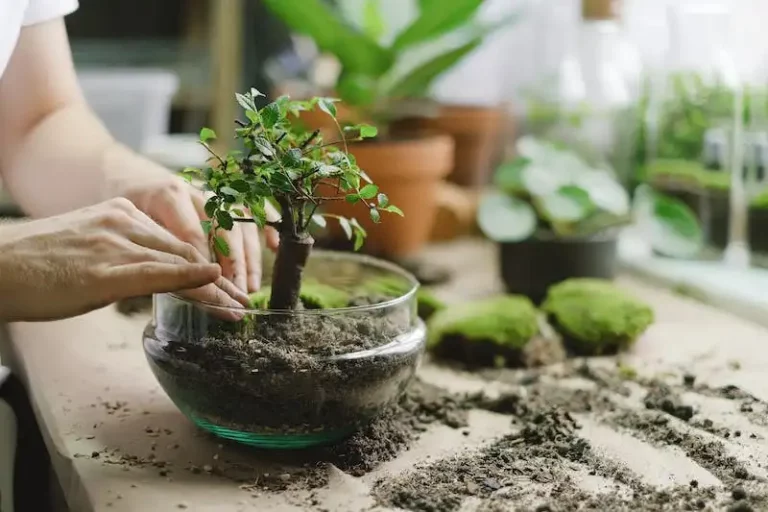Flowering in late summer through early fall, the poinsettia is a popular houseplant that can make a stunning addition to any home. Its vibrant colors, which often include shades of red, pink, and creamy white, are sure to brighten up any room. However, it’s important to note that poinsettias can be poisonous, so caution should be exercised, especially if there are children or pets present.
To promote the blooming of poinsettias, it’s important to provide proper care and maintenance. This includes placing the plant in a location where it will receive bright, indirect light for most of the day. Excess light or darkness can cause the plant to turn yellow or lose its leaves. Fertilizing the plant every two weeks with a balanced fertilizer also helps to promote blooming.
Once the holiday season is over, many people wonder how to keep their poinsettias alive and encourage re-blooming. In late December or early January, the plant should be cut back to about 6 inches above the base of the stems. Folks often make the mistake of leaving the plant as is, but this can result in a leggy and unattractive plant. By cutting it back, the plant will have a better chance of producing new growth and blooming again.
After the initial cutting back, poinsettias should be placed in a location where they will receive bright, indirect light during the day and complete darkness at night. This light-proof environment is crucial for re-blooming, and supplemental lighting may be necessary to achieve the desired darkness. This period of darkness should be maintained for about 12-14 hours every night from mid-December until early spring.
With proper care and maintenance, poinsettias can be encouraged to re-bloom year after year. As the days start to lengthen in early spring, new growth will appear at the nodes along the stems. Whenever the danger of frost has passed, the plant can be moved outdoors to a place where it will receive at least 6 hours of indirect light each day. Regular watering and a well-draining soil are essential during this time to ensure the plant’s continued health and longevity.
In conclusion, poinsettias are beautiful flowering plants that can bring life and color to any home during the holiday season. However, they require special care and attention to promote blooming and ensure their long-term survival. By following the tips outlined above, you can enjoy the beauty of poinsettias year after year.
When Should I Put My Poinsettia in The Dark
Poinsettias come alive with vibrant colors during the winter months, making them a popular choice for holiday decorations. To keep poinsettias in their beautiful state, they require proper care and maintenance. One important step in this process is putting the poinsettia in the dark.
Why do poinsettias need darkness?
Poinsettias are native to the warm regions of Mexico and they have a natural flowering cycle that is triggered by the shorter periods of daylight in the winter. In order to initiate this cycle and make your poinsettia bloom again next Christmas, it needs to be kept in complete darkness for a specific period of time.
Many people wonder when they should start the darkness period for their poinsettias. A common recommendation is to begin the darkness treatment around Thanksgiving, which is late November in the United States. This timing helps ensure that the poinsettia will be in full bloom by Christmas.
How to put your poinsettia in the dark
To put your poinsettia in the dark, find a location where it can be left undisturbed for 12-14 hours every night. Ideally, this location should be cool and dark, with temperatures between 60-65°F (15-18°C). Many people choose to use a closet or a room with little to no natural light.
It’s important to note that during the dark period, the poinsettia should not receive any light at all, not even a small amount. Even a brief exposure to light, like turning on a light in the room, can interrupt the dark cycle and delay the blooming process.
During the daytime, the poinsettia should be placed in a bright location where it can receive indirect sunlight. A windowsill is a good choice, as long as the plant is not directly in the path of cold drafts. Poinsettias are tropical plants and are sensitive to cold temperatures.
What to do after the darkness period
After the 12-14 hours of uninterrupted darkness, you can bring the poinsettia back into the light. Keep it near a window with filtered light, but not in direct sunlight. Water the plant thoroughly, allowing the excess water to drain out of the base, and make sure to remove any fallen or yellowing leaves.
To promote healthy growth and flowering, it’s important to continue caring for your poinsettia throughout the year. Regular fertilizing, watering, and maintaining a temperature between 65-75°F (18-24°C) will help keep your plant healthy and encourage new growth.
It’s worth mentioning that poinsettias are known to be toxic to pets and can cause skin irritation in humans. Keep this in mind when placing them in your house, and make sure to keep them out of reach of curious animals or children.
By following the proper care and maintenance techniques, you can enjoy the beauty of poinsettias not only during the Christmas season but also for a long-lasting display in your home.
Poinsettias – Care Maintenance and Re-Blooming
Poinsettias, also known as the Christmas flower, are a favorite holiday plant. To keep them looking their best and potentially re-blooming for future holiday seasons, proper care is essential. Here are some tips to care for and maintain poinsettias:
- Put your poinsettias in a well-drained pot with good soil.
- Keep poinsettias near a window where they can receive bright, indirect light during the daytime.
- Ambassador College of Horticulture figures that poinsettias appreciate daytime temperatures around 70-75 degrees Fahrenheit (21-23 degrees Celsius) and nighttime temperatures around 65 degrees Fahrenheit (18 degrees Celsius) to encourage proper development and maintain their vibrant colored bracts.
- The bracts are highly sensitive to changes in light, so poinsettias should be exposed to 12-14 hours of darkness every night starting in mid-December to promote re-blooming. To achieve this, move poinsettias to a light-proof location or cover them with a black cloth during the designated darkness periods.
- Continuing fertilizing poinsettias throughout the holidays with a balanced houseplant fertilizer to keep them healthy and vibrant.
- Take care not to overwater poinsettias, as this can cause root rot. Allow the soil to dry out slightly between waterings.
- Prevent poinsettias from coming into contact with cold drafts, as they are highly sensitive to cold temperatures and frost. This can cause the leaves to drop.
- When the holidays are over, poinsettias can be trimmed back to encourage new growth. Cut them back to around 6-8 inches (15-20 cm) above their bases and continue to provide them with the appropriate care.
- With proper care and maintenance, poinsettias have the potential to re-bloom the following holiday season. However, this process can be challenging and may require some patience and expertise.
Remember to keep your poinsettias alive and healthy throughout the year so that they can brighten up your holidays for many seasons to come!
How To Keep Poinsettias Alive For Next Christmas
Keeping poinsettias alive and thriving from one Christmas to the next requires careful attention and proper care throughout the year. Here are some tips to help ensure the survival of your poinsettias:
- Summer Care: In late spring or early summer, after the danger of frost has passed, half hardy or tender poinsettias should be moved outdoors to a location that receives full morning sunlight and partial shade in the afternoon. This will help them acclimate to the outdoor environment.
- Fertilization: Continuing from the summer care, regular fertilizing is essential for poinsettias. Apply a balanced fertilizer to the soil according to the package instructions. This will promote healthy growth and encourage the production of new blooms.
- Maintenance: In the fall, as the days start to become shorter, poinsettias should be brought inside and placed near a bright window. Maintain a temperature between 65-70°F (18-21°C) during the daytime and slightly cooler at night. Avoid placing poinsettias near drafts or heating vents.
- Watering: Water poinsettias whenever the top inch of soil feels dry to the touch. Avoid overwatering, as this can cause root rot. Make sure the pot has proper drainage to prevent standing water.
- Re-blooming: In mid-December, poinsettias require a period of uninterrupted darkness. From late afternoon until morning, move them to a closet or cover them with a dark cloth. This mimics the natural light cycle and will encourage the formation of flower buds.
- Supplemental Lighting: If your poinsettias don’t receive enough natural light during the winter months, consider using supplemental lighting such as fluorescent grow lights. Place the lights above the poinsettias for 12-14 hours a day to ensure they receive enough light.
- Care in Spring: In the spring, as the days start to become longer, gradually increase the amount of light the poinsettias receive. This will help them transition to the brighter conditions of summer. Continue regular watering and fertilizing.
- Long-Term Care: If you want your poinsettias to bloom again for the next Christmas, it’s important to provide them with proper care year-round. Regularly monitor their water and light requirements, and trim back any leggy or overgrown growth. This will help maintain a compact and healthy plant.
Following these guidelines will increase the chances of your poinsettia producing colorful blooms to brighten up your holiday season next year. With proper care and attention, your poinsettias can continue to thrive and bring joy for years to come.



